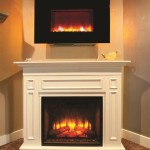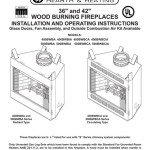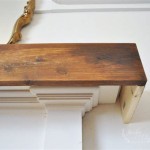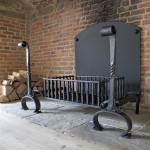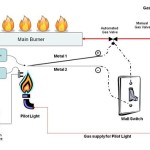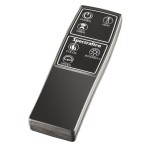The Unsung Hero of Your Fireplace: Understanding Fireplace Wood Grates
A fireplace is a focal point of many homes, offering warmth and ambiance during colder months. While the fire itself captures attention, an often-overlooked component plays a crucial role in its function and efficiency: the fireplace wood grate. This seemingly simple structure significantly impacts airflow, combustion, and the overall safety of your fireplace. Without a properly sized and constructed grate, achieving a consistent and efficient fire is much more challenging.
The primary function of a fireplace wood grate is to elevate the firewood off the floor of the fireplace. This elevation creates space beneath the wood, allowing air to circulate freely. Adequate airflow is essential for the combustion process. When wood lies directly on the fireplace floor, the lack of oxygen inhibits complete burning, leading to smoke buildup, inefficient heat production, and increased creosote accumulation in the chimney. Creosote is a highly flammable byproduct of incomplete combustion and a significant fire hazard.
The grate also helps to consolidate the fire, keeping the logs together and preventing them from rolling or shifting. This controlled burning environment allows for a more consistent and manageable flame, making it easier to add wood and maintain the fire. A rolling log could easily fall out of the fireplace, presenting a serious safety risk. A well-designed grate contributes substantially to fireplace safety by containing the burning materials.
The Benefits of Using a Fireplace Wood Grate
The advantages of utilizing a fireplace wood grate extend beyond simply holding the logs. They directly impact the quality of the fire and the safety of your home. These benefits are often underestimated, but understanding them allows homeowners to make informed choices about their fireplace equipment.
One of the most significant benefits is improved airflow. The elevated position of the wood enables oxygen to reach the logs from all angles, including underneath. This enhanced air circulation results in a hotter, more efficient fire. Less wood is needed to achieve the desired heat output, saving both time and money. Incomplete combustion leads to smoke and wasted fuel; a wood grate mitigates these issues.
Another key advantage is reduced creosote buildup. As mentioned earlier, creosote is a highly flammable byproduct of incomplete combustion. By promoting better airflow and more complete burning, a wood grate reduces the amount of creosote that forms in the chimney. Regular chimney cleaning is still essential, but a grate can significantly decrease the rate at which creosote accumulates, lowering the risk of chimney fires and prolonging the lifespan of the chimney liner.
Furthermore, a wood grate simplifies the process of ash removal. The ash falls beneath the grate, making it easier to scoop out without disturbing the burning logs. This creates a cleaner and more convenient fireplace experience. Regular ash removal is important for maintaining proper airflow and preventing ash from accumulating to a point where it hinders the fire. A good grate system will allow for easy and efficient ash management.
Finally, using a grate contributes to increased safety. By keeping the logs contained and preventing them from rolling out, a grate minimizes the risk of stray embers or burning wood escaping the fireplace. This is particularly important in homes with children or pets. Choosing a grate of the correct size and construction provides a safer and more controlled fire experience.
Factors to Consider When Choosing a Fireplace Wood Grate
Selecting the right fireplace wood grate involves more than just picking the first one you see. Several factors influence the performance and longevity of the grate. These include size, material, design, and overall construction. Careful consideration of these elements ensures that the grate is well-suited to your specific fireplace and burning habits.
The size of the grate is paramount. It should be appropriately sized for the dimensions of your fireplace firebox. A grate that is too small will not adequately support the logs, while a grate that is too large may not leave enough space for proper airflow. Measure the width, depth, and height of your firebox to determine the optimal grate dimensions. Generally, the grate should be a few inches smaller than the width and depth of the firebox to allow for sufficient clearance.
The material of the grate is another crucial consideration. The most common materials are cast iron and steel. Cast iron grates are known for their durability and heat retention properties. They can withstand high temperatures and provide a long lifespan. Steel grates, particularly those made from heavy-duty steel, are also durable and offer good value. Ensure that the material is thick enough to withstand the weight of the logs and the intense heat of the fire. Thin, flimsy grates will warp and break down quickly.
The design of the grate can also impact its performance. Some grates feature angled bars for better airflow, while others have a deeper design for holding more wood. Consider the type of wood you typically burn and the size of your fires when choosing a grate design. For example, if you burn large logs, a grate with a deeper design may be beneficial. If you prioritize airflow, a grate with angled bars may be a better choice.
Finally, examine the overall construction of the grate. Look for sturdy welds and a robust frame. A well-constructed grate will be able to withstand years of use. Avoid grates with loose joints or visible signs of weakness. Pay attention to the weight capacity of the grate to ensure that it can safely support the amount of wood you plan to burn.
Different Types of Fireplace Wood Grates
The market offers a variety of fireplace wood grates, each with its own unique features and benefits. Understanding the different types can help homeowners choose the grate that best suits their needs and preferences. While the basic function remains the same, variations in design and materials cater to different fireplace setups and burning styles.
Standard bar grates are the most common type of fireplace wood grate. These grates consist of a series of parallel bars, typically made of cast iron or steel. They are simple in design and effective at elevating the wood and allowing for airflow. Standard bar grates are a good choice for general use and are available in a wide range of sizes and materials.
Cast iron grates are valued for their durability and heat retention. Cast Iron wood grates are known for ability to slowly radiate heat into the room even when the fire has died down. They are naturally heavier which also makes for a more sturdy grate. However they may be more prone to cracking in extreme temperature changes.
Wrought iron grates are a more decorative option, often featuring intricate designs and patterns. While they may not be as efficient at heat retention as cast iron grates, they add a touch of elegance to the fireplace. Wrought iron grates are typically crafted from steel and are durable enough for regular use, however may require some rust maintenance.
Arched grates feature a curved design that is intended to promote better airflow around the logs. The arched shape allows for more air to circulate underneath the wood, leading to more complete combustion. These grates are a good choice for fireplaces that tend to suffer from poor airflow. Usually made of steel, they prove to be highly durable.
Finally, custom-made grates are available for those with unique fireplace dimensions or specific design preferences. Custom grates can be tailored to fit any firebox and can be made from a variety of materials. While they are more expensive than standard grates, they offer the best possible fit and performance.
Choosing the right fireplace wood grate is an investment in the safety, efficiency, and enjoyment of your fireplace. By considering the factors outlined above, homeowners can select a grate that will provide years of reliable service. Proper grate selection leads to safer fires, efficient heat, and a more enjoyable fireplace experience, making it a worthwhile addition to any home with a fireplace.

Fireplace Grates For Wood Burning Fireplaces

Costway 25 Inch Fireplace Log Grate Heavy Duty Steel Firewood Burning Rack Holder Com

Home

Fireplace Grate 20in Heavy Duty Racks For Inside Firewood Log Rack Holder Accessories Chimney Hearth Wood Stove Burning Indoor 8 Bars Fire Pit Outdoor Yahoo Ping

Singlyfire Fireplace Grate 30 Inch Heavy Duty Firewood Stove Log Holder Cast Iron Wrought Wood Burning Rack For Indoor Outdoor Chimney Com

Fireplace Log Grates High Quality Friendly Fires

Fireplace Grates Guide Woodland Direct

Gratewalloffire Com High Efficiency Fireplace Grates Grate Inserts

Wooden Burning Stove Grate Cast Iron Heavy Duty Fireplace Indoor Chimney Hearth China Log Made In Com

Private Brand Unbranded 23 In Black Steel Fireplace Grate 51087 The Home Depot
Related Posts

